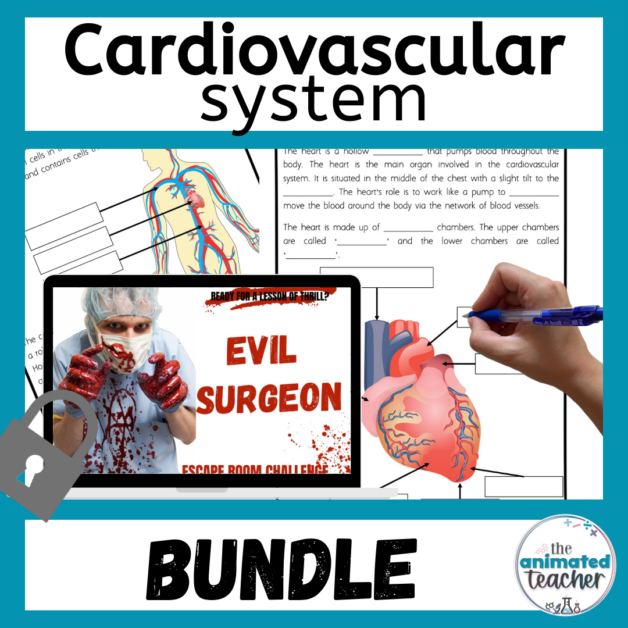10 movement brain break ideas for middle school
1. Throw a ball
Have students throw a ball to each other to answer questions. Once answered they choose who in the class they want to answer the next one by throwing the ball to them.
2. Collect materials from stations around the room
Rather than you handing out materials to students, have them collect from stations around the room. If my lesson involves worksheets, glue and scissors, then I have these in three different locations in the room to allow for extra movement during the lesson.
3. Rearrangement of collaborative groups
Having multiple grouping options means you can start the lesson with students in one group and then change groups which allows for them to move around and change seats.
4. Change locations
If you have the opportunity, consider taking your students outside for a portion of the lesson, or to another area of the school.
5. Convert a worksheet into a movement activity
Take an existing resource and change the way you use it. These are some of my favourite brain break ideas for middle school because they require minimal prep and obtain high engagement from students. Here are some ideas:
-
-
-
- True or False: Have students answer by moving to one side of the room for True and the other for False. If you’re tight for space, this can also be done with hands on heads for True and hands on hips for False.
- Multiple choice ABCD: students move to one of the four corners in the room for each option.
- Agree / Disagree: students line up in strength of their agreement / disagreement to a statement
-
-
6. Post-it notes
I love using post-it notes in my lessons. Have students write their question / answer / drawing on it and then ask them to post it on the board or another area in the classroom they have to walk to.
7. Gallery walk
Gallery walks are an opportunity for students to walk around and view each other’s work. Whether it is their individual work or an activity you have just completed in groups, this activity is no prep for you and allows for students to move around the classroom with purpose.
8. Seat swap
Mid lesson you could ask students to do a seat swap with someone. It may be that they swap with another student or that they move from sitting on chairs to the floor or to standing at lab benches.
9. Learning station brain breaks
Learning stations or activity stations are my favourite way to set up a lesson. These organically allow for movement around the classroom as students move from one station to another. As I am a science teacher and work in a lab, these stations are also usually standing stations. This also allows for more movement than just sitting in seats.
10. Invite students to come and write up on the board
Students at all ages love to write on the board! Invite them to contribute to a class mind map, add their vote to a tally or write any questions they still have.

8 discussion brain break ideas for middle school
Why is discussion important for brain breaks and learning? Because students learn best when they hear their learning in their own voice.
Here are some ideas and prompts you can use to promote peer to peer discussion in your classroom that require no prep from you! At any point in the lesson when you think your students need a brain break you can use any of these!
In partners or small groups, share:
- One thing you learnt, one thing you un-learnt and one thing you re-learnt
- One question you still have and one question this lesson answered for you
- How you think this lesson relates to the previous lesson
- Predict what you think the next learning activity may be focussed on
- Something you saw, thought and wondered during the last activity
- Personification of the content. This is a higher order thinking skill that allows immediate differentiation. Some examples would be:
-
-
- What would a pentagon say to a triangle?
- What would an adjective say to a verb?
- What would a plant cell say to an animal cell?
- How is a plant cell like a factory?
- What would an ionic bond say to a covalent bond
-
7. Similar to the above brain break idea, ‘would you rather’:
-
-
- Would you rather be a pentagon or triangle? Why?
- Would you rather be a plant cell or animal cell?
- Would you rather be an ionic bond or a dispersion force? (This one was great with my Chemistry class of year 12 boys who definitely didn’t want to be considered ‘weak’)
-
8. Peer teaching: take a small group of students and teach them new content then have them go back and teach their group.
5 brain break ideas for middle school that combine movement & discussion
Want some brain break ideas for middle school that combine both movement and discussion? I have you covered.
1. Take 15 steps and find someone to tell 2 things you learnt
I use this one so often because it is easy, requires no prep, and is relevant no matter the content you are teaching.
2. Play scissors, paper, rock
Great simple game for revision of content. Whoever wins gets to ask the other a question related to the content. Students don’t even have to stay in the same pair. This could involve one round then find a new person to play.
3. Jigsaw model
This model requires students to change groups and peer teach.
4. Quizlet Live
Quizlet Live automatically assigns groups to revise content in a collaborative way. Each round changes the groups so students have to move to sit with their new group.
5. Inner & outer circle discussion
Students organise themselves into two circles and pair up with someone in the other circle. Ask a question or provide a discussion statement for students to discuss in their pair. After the allocated time, the outside circle moves to the right 1 position and so is paired with a new partner for the next question.
Conclusion
Planning brain breaks in your lessons does not have to be onerous. This list includes brain break ideas for middle school that are low-prep, easy to implement, and incorporate movement and discussion to assist students in their learning.
Have any of your own examples of break break ideas for middle school?
Let us know in the comments below!

44 easy science differentiation strategies
Science concepts are not easily grasped by all. Try this list of science differentiation strategies to ensure all students can access the learning.








It’s remarkable to visit this site and reading the views of all colleagues regarding this article, while I am also zealous
of getting know-how.
An intriguing discussion is definitely worth comment. I do think that you should publish more on this subject, it may not be a taboo subject but typically people don’t discuss such issues. To the next! Best wishes!!
I use “flip the bottle” for a brain break. It’s a water bottle filled 1/3 full of water and then the students take turns flipping it trying to stand it up. They do it until a student gets to 10.
Winner get candy!
My students would love doing that! Thank you for sharing your idea. I am definitely going to try this.